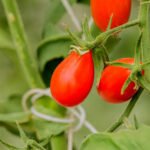Are you looking to enhance the beauty and productivity of your vegetable garden? Incorporating flowers that are good in vegetable gardens can be a game-changer. Not only do they add color and vibrancy to your garden, but they also offer numerous benefits for your vegetables. From attracting beneficial insects to improving soil health, the right flowers can make a significant impact on the success of your garden.
When it comes to selecting flowers for your vegetable garden, it’s essential to choose the right ones that will complement and enhance the overall environment. In this article, we will explore the various benefits of planting flowers in vegetable gardens, tips for choosing the right flowers, and how they can improve soil fertility and overall health. We will also discuss the concept of companion planting and how certain flowers can benefit the growth of nearby vegetables.
In addition to their aesthetic appeal, flowers play a crucial role in creating a balanced ecosystem within vegetable gardens. They can attract pollinators such as bees and butterflies, improve soil structure, repel harmful pests, and even provide additional culinary options with edible blooms. So if you’re ready to take your vegetable garden to the next level, keep reading to discover the many advantages of incorporating flowers into your gardening space.
Choosing the Right Flowers
When selecting flowers for a vegetable garden, it’s important to choose varieties that not only complement the vegetables but also enhance the overall aesthetic appeal of the garden. There are several factors to consider when choosing the right flowers for a vegetable garden:
1. Color and Height: Consider the colors and heights of the flowers to ensure they complement the vegetables without overshadowing them. Taller flowers can be planted at the back of the garden beds, while shorter ones can be placed at the front or along pathways.
2. Pollination: Select flowers that attract pollinators such as bees and butterflies. This can help improve pollination and increase vegetable yields in the garden. Some excellent choices for attracting pollinators include lavender, bee balm, and sunflowers.
3. Companion Planting: Look for flowers that have beneficial effects on nearby vegetables through companion planting. For example, marigolds can deter pests from attacking tomatoes, while nasturtiums can repel aphids from beans and cucumbers.
In addition to these tips, it’s important to consider the specific growing conditions of your vegetable garden, such as sunlight exposure and soil quality, when choosing flowers that will thrive alongside your vegetables. By carefully selecting complementary flowers, you can create a beautiful and productive garden that benefits both plants and pollinators alike.
Companion Planting
Companion planting is a gardening technique where different plants are strategically placed near each other to enhance growth, repel pests, attract beneficial insects, and improve overall health. When it comes to vegetable gardens, incorporating flowers as companion plants can offer numerous benefits. Certain flowers can help improve soil fertility, provide natural pest control, and even enhance the flavor of vegetables.
One of the key advantages of companion planting with flowers in vegetable gardens is pest control. For example, marigolds are known to repel nematodes, which can be harmful to many types of vegetables.
Additionally, nasturtiums not only add a pop of color to the garden but also attract aphids away from vegetables such as tomatoes and cucumbers. By strategically choosing the right flowers as companions to vegetables, gardeners can naturally reduce the risk of pest infestations without relying on chemical pesticides.
In addition to pest control, certain flowers can also improve soil health in vegetable gardens. Plants like clover and vetch are nitrogen-fixing legumes that help replenish nitrogen levels in the soil, benefiting nearby vegetables by providing them with essential nutrients for growth. The presence of these flowers also contributes to overall biodiversity in the garden, creating a more balanced ecosystem that supports healthier plant growth.
| Flower | Benefit |
|---|---|
| Marigolds | Repel nematodes |
| Nasturtiums | Attract aphids away from other vegetables |
| Clover and Vetch | Nitrogen-fixing legumes that replenish soil nutrients |
Pest Control
Attracting Beneficial Insects
One of the key benefits of planting flowers in vegetable gardens is their ability to attract beneficial insects. These helpful bugs can aid in pollination, which is essential for the production of many vegetables. Flowers like marigolds, daisies, and sunflowers are known for their attractiveness to pollinators such as bees and butterflies. By incorporating these flowers into your garden, you can encourage the presence of these beneficial insects and support a healthy ecosystem.
Repelling Harmful Pests
In addition to attracting beneficial insects, certain flowers can also help repel harmful pests from vegetable gardens. For example, planting chrysanthemums can deter nematodes, which are microscopic pests that can damage the roots of many vegetable plants. Likewise, nasturtiums are known for repelling aphids and whiteflies, common pests that can wreak havoc on crops if left unchecked. By strategically planting these pest-repelling flowers throughout your garden, you can naturally protect your vegetables from potential harm.
Natural Pest Control
By utilizing flowers that attract beneficial insects and repel harmful pests, you can create a natural form of pest control in your vegetable garden. This approach reduces the need for chemical pesticides, which can be harmful to both the environment and human health.
Embracing this eco-friendly method not only promotes a harmonious balance within your garden but also contributes to a healthier overall ecosystem. Incorporating pest-controlling flowers into your vegetable garden provides an effective and sustainable way to manage potentially destructive critters while supporting the growth and health of your crops organically.
Soil Health
When it comes to maintaining a healthy vegetable garden, soil health is of utmost importance. One way to improve soil fertility and overall health in vegetable gardens is by incorporating the right flowers into the mix. Certain flowers have the ability to enhance the quality of the soil, providing essential nutrients and promoting beneficial microbial activity. Here are some flowers that are good in vegetable gardens for improving soil health:
- Marigolds: Known for their ability to naturally repel harmful nematodes, marigolds also add organic matter to the soil as they decompose, enriching its fertility.
- Lavender: This fragrant flower not only attracts pollinators but also has natural antifungal properties that can promote healthy soil conditions.
- Calendula: Also known as pot marigold, calendula adds vibrant color to the garden while its roots work to break up compacted soil, improving drainage and aeration.
In addition to these specific flowers, incorporating a diverse range of flowering plants can increase biodiversity in the garden, which in turn supports a healthier ecosystem underground. This helps create an environment where beneficial microorganisms thrive and contribute to improved soil structure.
Moreover, certain flowers like sunflowers and daisies have deep tap roots that help break up compacted soil layers, allowing air and water to penetrate more easily. As these flowers grow and reach maturity, they can be cut back and left on the soil as mulch, further adding organic matter and nutrients to support vegetable growth. By carefully selecting and introducing these flowers into your vegetable garden, you can significantly boost its overall health and fertility.
Lastly, combining different flower species with varying root structures can prevent compaction of the soil while also increasing its ability to retain moisture. This not only benefits vegetables by providing them with consistent access to water but also nurtures a rich environment for beneficial microbes essential for nutrient uptake by plants. Ultimately, integrating flowers into your vegetable garden will create a self-sustaining ecosystem where both plants and microorganisms harmoniously work together for optimal soil health.
Seasonal Blooms
When planning a vegetable garden, it’s important to consider the aesthetic appeal that flowers can bring to the space. By incorporating seasonal blooms, you can ensure that your garden looks beautiful and vibrant throughout the year. Whether it’s the bright colors of spring or the warm hues of autumn, choosing the right flowers can provide year-round beauty in your vegetable garden.
One great option for early spring blooms is the crocus, which comes in a variety of colors and can add cheerful pops of color to your garden after a long winter. As spring transitions into summer, consider planting sunflowers, zinnias, and cosmos for their vibrant and bold blooms. These flowers not only add visual interest but also attract pollinators that are beneficial for your vegetable plants.
For late summer and fall, look into planting asters, mums, and ornamental kale for a burst of color as the temperatures cool down. These flowers can complement the changing foliage of your vegetables and create a visually stunning garden landscape. By carefully selecting flowers that bloom at different times of the year, you can ensure that your vegetable garden remains visually appealing in every season.
As shown from research data.
| Seasonal Blooms | Recommended Flowers |
|---|---|
| Early Spring | Crocus |
| Spring to Summer | Sunflowers, Zinnias, Cosmos |
| Late Summer to Fall | Asters,Mums ,Ornamental Kale |
Edible Flowers
Planting edible flowers alongside vegetables can not only enhance the aesthetic appeal of a garden, but also offer culinary benefits. Edible flowers such as nasturtiums, borage, and calendula not only add vibrant colors to the garden but can also be used as a flavorful addition to salads, desserts, and beverages. These dual-purpose plants allow for a more diverse and visually appealing garden while also providing an additional source of flavors for home-cooked meals.
In addition to adding an extra pop of color and flavor to dishes, planting edible flowers alongside vegetables can also attract pollinators such as bees and butterflies. This symbiotic relationship can benefit the overall health and productivity of the garden by ensuring proper pollination of the vegetable plants. Furthermore, incorporating edible flowers into vegetable gardens can create a more balanced ecosystem by providing food sources for beneficial insects that help control pest populations.
When selecting edible flowers for a vegetable garden, it is important to consider both their aesthetic and culinary qualities as well as their compatibility with the surrounding vegetable crops. Careful planning and research can ensure that the chosen edible flowers not only complement the visual appeal of the garden but also provide mutual benefits to the overall health and productivity of the vegetable plants.
By selecting the right combination of edible flowers and vegetables, gardeners can create a harmonious and diverse gardening space that is both visually stunning and bountiful in flavors.
Low-Maintenance Options
When it comes to adding flowers to a vegetable garden, low-maintenance options can be a great choice for busy gardeners. These types of flowers not only thrive alongside vegetables but also require minimal care, making them an ideal addition to any garden.
Whether you are a novice gardener or simply want to minimize the time and effort spent on tending to your plants, here are some suggestions for low-maintenance flowers that will enhance the beauty and functionality of your vegetable garden.
Perennial Flowers
One option for low-maintenance flowers in vegetable gardens is perennial flowers. These plants come back year after year, reducing the need for replanting and ongoing maintenance. Some examples of perennial flowers that thrive in vegetable gardens include coneflowers, yarrow, and black-eyed Susans. These hardy plants are known for their resilience and ability to coexist with vegetables without requiring much attention.
Native Wildflowers
Another low-maintenance option is to incorporate native wildflowers into your vegetable garden. Native plants are well-adapted to the local environment, making them easier to care for compared to non-native species. They also attract beneficial insects and pollinators, which can help support the health of your vegetable crops. Some examples of native wildflowers that work well in vegetable gardens include butterfly milkweed, purple coneflower, and wild bergamot.
Drought-Tolerant Flowers
For those living in regions with dry or arid climates, choosing drought-tolerant flowers is essential for maintaining a low-maintenance garden. Drought-tolerant flowers require minimal watering and can withstand periods of limited rainfall. Species such as lavender, sedum, and Russian sage are excellent choices for dry conditions and can add beauty to your vegetable garden without requiring constant attention.
By selecting low-maintenance flowers that thrive in vegetable gardens and require minimal care, you can create a visually striking and functional space without added stress or workload. With careful planning and consideration of the specific needs of your garden, you can enjoy the benefits of both flowers and vegetables with minimal effort involved in their upkeep.
Final Thoughts
In conclusion, the inclusion of flowers in vegetable gardens provides a wide range of benefits for both plants and gardeners. Not only do they enhance the aesthetic appeal of the garden, but they also play a crucial role in improving soil fertility, attracting beneficial insects, and repelling harmful pests. By carefully selecting the right flowers and practicing companion planting, gardeners can create a harmonious ecosystem that promotes the health and growth of their vegetable crops.
Furthermore, the concept of planting edible flowers alongside vegetables adds a delightful culinary and aesthetic dimension to the garden. Edible flowers not only contribute to a diverse and visually stunning landscape but also offer an opportunity for creative culinary exploration, adding unique flavors and textures to dishes. Additionally, choosing low-maintenance options ensures that even novice gardeners can effortlessly enjoy the beauty and benefits of incorporating flowers into their vegetable gardens.
In essence, by considering factors such as seasonal blooms, pest control, soil health, and careful flower selection, gardeners can create thriving ecosystems within their vegetable gardens. Ultimately, the incorporation of flowers not only enriches the overall gardening experience but also contributes to sustainable and bountiful harvests year after year. The beauty and functionality of flowers make them an indispensable addition to any vegetable garden.
Frequently Asked Questions
What Flowers Should I Put in a Vegetable Garden?
Flowers that are beneficial for a vegetable garden include marigolds, nasturtiums, and calendula. These flowers can help repel pests, attract pollinators, and even improve soil health, making them great companions for your vegetables.
What Flowers Grow Well in Raised Beds?
Raised beds provide good drainage and aeration, making them ideal for growing a variety of flowers. Some flowers that thrive in raised beds include petunias, snapdragons, and zinnias. These colorful blooms can add beauty and attract beneficial insects to your garden.
What Grows Well Together in a Vegetable Garden?
Planting compatible crops together in a vegetable garden can benefit each other’s growth. For example, pairing tomatoes with basil can enhance the flavor of the tomatoes while deterring pests. Other good combinations include carrots with onions or radishes to prevent carrot fly infestations. Understanding which plants complement each other is essential for a successful and harmonious vegetable garden.

If you’re looking to get into vegetable gardening, or are just looking for some tips on how to make your current garden better, then you’ve come to the right place! My name is Ethel and I have been gardening for years. In this blog, I’m going to share with you some of my best tips on how to create a successful vegetable garden.





